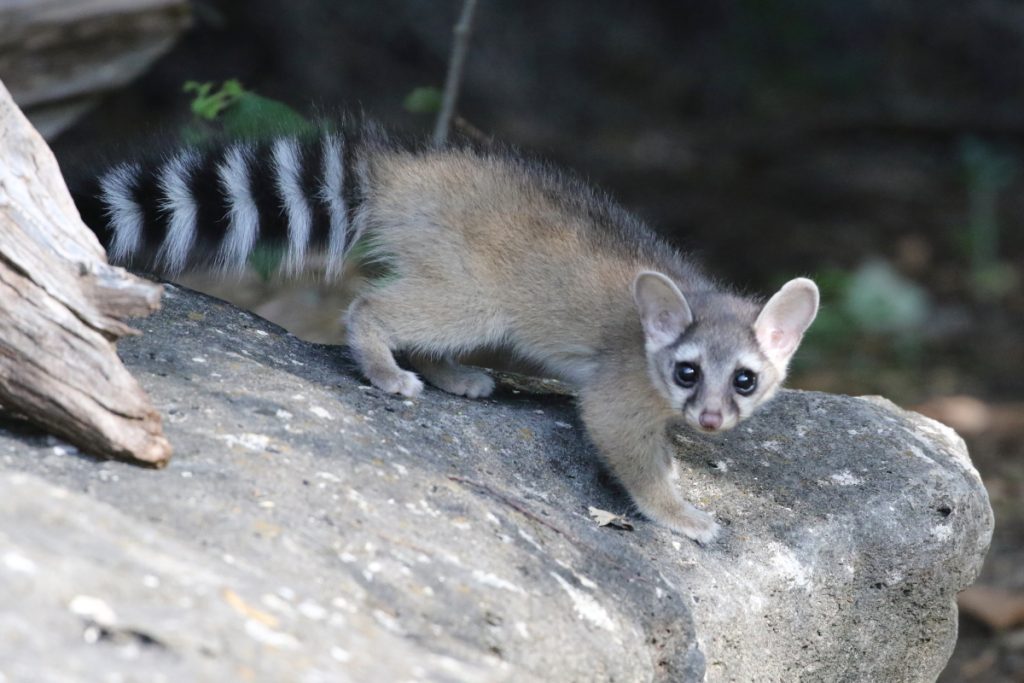Our hours for Nov 21, 2024: 9:00 AM-5:00 PM

The Ring-Tailed Cat (Bassariscus astutus), also known as the Ringtail, is a captivating nocturnal mammal known for its strikingly bushy tail adorned with alternating black and white bands.

The Ring-Tailed Cat (Bassariscus astutus), also known as the Ringtail, is a captivating nocturnal mammal known for its strikingly bushy tail adorned with alternating black and white bands. Visit our Nighttime Natives exhibit to observe these elusive and charming creatures up close. Let’s discover more about their diet, habitat, size, and conservation status, as well as some intriguing facts that make the Ring-Tailed Cat a true marvel of the animal kingdom.
Ring-Tailed Cats are omnivorous, with a diet that consists of a diverse range of foods. They primarily feed on insects, small mammals, and birds, but also consume fruits, berries, and vegetation depending on the season and availability. Their adaptability and diverse diet enable them to thrive in a variety of habitats.
Ring-Tailed Cats inhabit a wide range of environments, including arid deserts, rocky canyons, and forested areas throughout the southwestern United States, Mexico, and Central America. They are highly adaptable creatures and can also be found in scrublands and pinyon-juniper woodlands. These agile climbers prefer habitats with plenty of trees, rocks, and crevices to take shelter in and use their climbing skills to navigate the terrain.
Ring-Tailed Cats are small, slender mammals, with a body length typically ranging from 12 to 16 inches (30 to 40 cm) and a tail length of 12 to 17 inches (30 to 43 cm). They generally weigh between 1.5 to 3.3 pounds (0.7 to 1.5 kg). Their long, bushy tail is used for balance and communication, and its striking band pattern serves as camouflage in their natural environment.
The Ring-Tailed Cat is currently listed as “Least Concern” on the International Union for Conservation of Nature (IUCN) Red List. Their population is considered stable across most of their range. However, they may face local threats such as habitat loss, human encroachment, and predation by domestic animals.
During your visit to the Abilene Zoo, be sure to stop by our Nocturnal exhibit of Elm Creek Backyard to observe the enchanting Ring-Tailed Cat. As you learn about their unique adaptations, diverse diet, and remarkable climbing abilities, you’ll develop a newfound appreciation for these elusive and charismatic mammals.